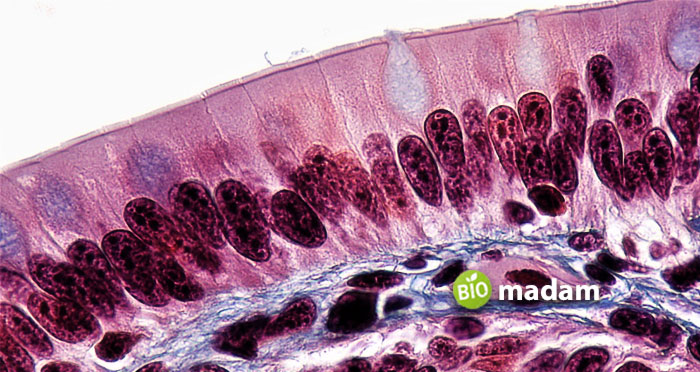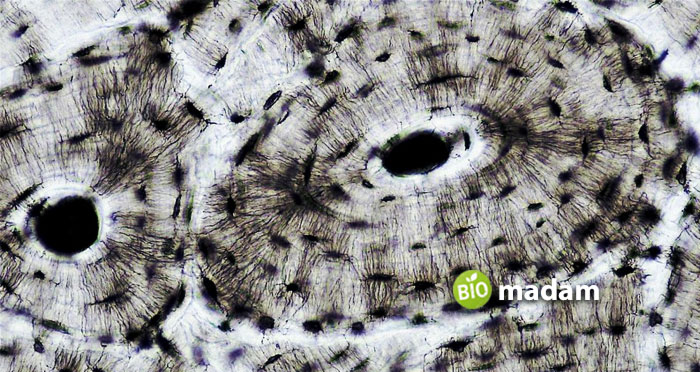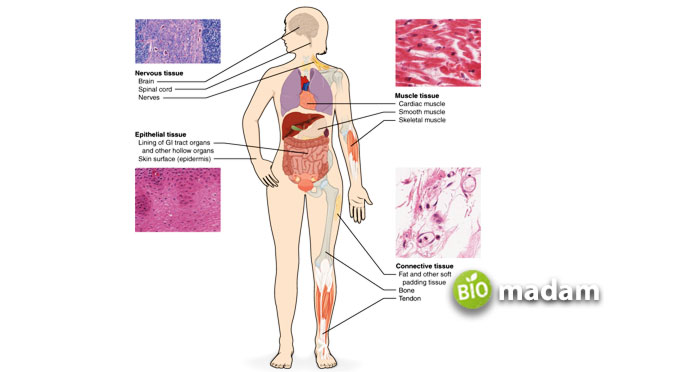Before understanding the difference between epithelial and connective tissues, know that both of these are two out of four major types of animal tissues.
Epithelial tissues are widely present throughout a body that is clustered with polyhedral cells. These animal tissues are firmly connected and form a cellular sheet to line the internal, hollow body organs. While on the contrary, connective tissues are composed of fibers, cells, and gel-like materials that essentially contribute to supporting a body. Let’s have a detailed look at both of them separately.
Comparison Table
We thought of presenting a brief comparison table that will help you a better understand.
| Epithelial Tissues | Connective Tissues | |
| Main Function | Functions to protect other tissues | Helps in connecting and providing support to cells |
| Intercellular Matrix | Lesser intercellular matrix present | Most of it is formed by intercellular matrix |
| Nature of Cells | Tightly packed with each other | Scattered everywhere |
| Location w.r.t Basement Membrane | Lies above the membrane | Lies below the membrane |
| Nutrition | Gets nutrition from cellular membrane | Gets nutrition from blood capillaries |
| Bounded By | Desmosomes & hemi-desmosomes (special proteins) | Blood capillaries, elastic & collagen fibers. |
| Vascularity | Avascular (no blood supply) | Most connective tissues are rich with blood vessels |
| Located In | Kidneys, skin, lungs, etc. | Tendons, ligaments, blood, etc. |
Epithelial Tissues – Explanation
These tissues are confined to line all the cavities and surfaces of the internal structures of a body. Epithelial tissues have their origin in germ layers, which are chiefly ectoderm, endoderm, and mesoderm. The ectoderm is responsible to line as an outer layer, whereas the endoderm lines the innermost structure (gastrointestinal tract), and the mesoderm lines body cavities.
We have classified epithelial tissues into three fundamental categories, such as:
Columnar Epithelium – column-like cells
Cuboidal Epithelium – falls in cubic shape cells
Squamous Epithelium – scale-like, flattened cells

Connective Tissues – Explanation
As the name indicates, these tissues are purposed to connect, segregate, and support all other kinds of tissues in a body. They have broad networking of blood capillaries and nerves that are liable to forming and arranging blood, skeleton, muscles, fats, etc. Fibroblast is one of the most common connective tissue that plays a vital part in healing and synthesizes collagen tissues. Some types of connective tissues include adipose tissues, cartilage, bone, etc.

Major Differences Between Epithelial and Connective Tissues
Below is the detail on significant differences between the two types of animal tissues:
Composition
Epithelial Tissues
These tissues are all made up of cells that are closely arranged to each other, plus a little quantity of intercellular matrix.
Connective Tissues
On the other hand, connective tissues are composed of a larger amount of intercellular matrix and other cells.
Functions
Epithelial Tissues
As these tissues are primarily present in cell junctions, they aid in the communication between the plasma membrane and other tissue cells. Moreover, epithelial tissues promote muscles and bone formation. They are also responsible for the protection of cells, secretions, excretion processes, etc.
Connective Tissues
Connective tissues function mainly to provide support to the muscles and bones of the skeletal system. Moreover, they help in insulating the tissues and promote the working of lymph and blood cells (RBCs and WBCs).

Origin & Arrangement
Epithelial Tissues
The origin of epithelial tissues is basically the embryological germ layers, which are endoderm, ectoderm, and mesoderm. Furthermore, these tissues are arranged in two ways in a body, either as a single layer or multilayer.
Connective Tissues
These tissues are originated directly from the mesoderm (germ layer). They are not well-arranged in a body but are scattered within the intercellular matrix.
Relation with Blood Capillaries & Basement Membrane
Epithelial Tissues
Unlike other tissues, epithelial tissues do not enclose themselves in blood capillaries, so takes nutrition from the cellular membrane. Moreover, they usually lie above the basement membrane (kind of extracellular matrix.)
Connective Tissues
Unlike epithelium, connective tissues are surrounded by blood capillaries and stay below the basement membrane known as lamina propia. They have the benefit of gaining nutrition from the enclosed blood capillaries.
Presence
Epithelial Tissues
These tissues are most commonly present in the mucous membrane, kidneys, right and left lungs, and skin.
Connective Tissues
Connective tissues are present everywhere where support is needed, such as nerves, bones, tendons, ligaments, and blood.
Conclusion
While finding the difference between epithelial and connective tissues from the article above, we know that these are two key types of all the animal tissues. Both of these tissues, epithelial and connective, work together to provide support and protection to the body. Despite being opposite in composition, arrangement, and origin, both of the animal tissues function synergistically to protect the overall organs in a body and make a person fit to live.

Hello, I would like to introduce myself to you! I am Chelsea Rogers, an experienced blog writer for science articles, holding an MPhil degree. My enthusiasm to grab the best knowledge, let it relate to botany, zoology, or any other science branch. Read my articles & let me wait for your words s in the comment section.

